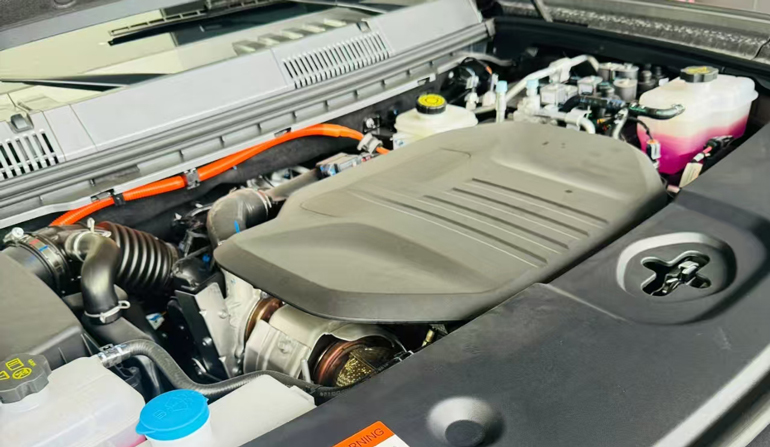Reducing Fuel Consumption by 10%: The Hidden Benefits of Optimizing the Cooling System
2025-08-08
For the modern transportation industry and vehicle owners focused on efficiency and cost, reducing fuel consumption is a perpetual core objective. While attention typically centers on engine technology, aerodynamics, or tires, the potential fuel-saving capability of a key system—the engine cooling system—is often overlooked. Optimizing the cooling system not only safeguards engine health but can also deliver a significant fuel consumption reduction of up to 10%, accompanied by multiple "hidden benefits."

Part 1: The Cooling System – The Engine's "Thermal Balancing Act"
The engine's core task is efficiently converting fuel's chemical energy into mechanical energy. However, the combustion process generates substantial waste heat (typically over 60% of the fuel's energy), which must be effectively managed. The cooling system's primary duty is to find the precise balance point between "overheating" and "overcooling":
1. Overheating Risks: Lead to lubricant failure, component deformation (e.g., cylinder scoring), and even detonation, severely damaging engine performance and longevity.
2. Overcooling Penalties: An engine operating below its designed optimal temperature range (typically 90-105°C / 194-221°F) suffers reduced efficiency due to:
Poorer Combustion: Lower temperatures cause poor fuel atomization and vaporization, resulting in slower and incomplete combustion (reduced thermal efficiency).
Increased Friction: Colder oil has higher viscosity, increasing friction resistance in moving parts (piston rings, bearings, etc.) (reduced mechanical efficiency).
Increased Heat Loss: More heat is carried away by coolant and dissipated via the radiator into the atmosphere instead of being converted into useful work.
Therefore, precisely maintaining the engine temperature within its optimal operating window is the cooling system's primary contribution to lowering fuel consumption.
Part 2: Optimizing the Cooling System – Key Strategies to Unlock Fuel Savings
Traditional thermostat-based cooling systems respond slowly and offer limited regulation precision, failing to meet modern engines' demands for efficient thermal management across all operating conditions (cold start, low-speed/high-load, high-speed cruising). The following optimization strategies significantly enhance performance, leading to lower fuel consumption:
1. Smart Thermal Management (Electronic Thermostats & Variable Flow Pumps):
Electronic Thermostats:** Replace traditional wax-type thermostats. Controlled by the Engine Control Unit (ECU) based on engine load, RPM, vehicle speed, ambient temperature, etc., they precisely manage the timing and opening degree for switching between the main and bypass coolant loops. This enables rapid warm-up (reducing cold-start duration and high fuel consumption during warm-up) and precise temperature control (ensuring the engine consistently operates within its optimal temperature range).
Variable Flow/Electronically Controlled Pumps:** Intelligently adjust pump speed or flow based on the engine's actual cooling needs. During cold starts or low-load conditions, pump operation is reduced or even stopped, minimizing the parasitic loss associated with driving the pump (traditional mechanical water pumps can consume 3-5% of engine power). Bosch research data indicates smart pump strategies can reduce fuel consumption by 2-5%.
2. High-Efficiency Electronically Controlled Fans:
Replace traditional fixed-speed or simple thermally controlled rigidly-coupled fans with electronically controlled viscous fans or electric fans. These fans operate at high speed only when additional radiator cooling is required, with speed adjusted on-demand.
Fuel Saving Principle: Significantly reduces unnecessary fan operation time and power consumption (fan power draw is substantial at high speeds). Michelin data shows optimized fan control can deliver fuel savings of up to 3-8% for heavy-duty trucks.
3. Low Flow Resistance & High-Efficiency Heat Exchange:
Optimized Coolant Circuit Design: Reduce bends and use smooth internal-hose surfaces to lower coolant flow resistance.
High-Efficiency Radiators/Charge Air Coolers: Employ more compact designs with superior heat transfer (e.g., increased surface area, optimized fin structures), maintaining cooling capacity while reducing size and aerodynamic drag.
Low-Friction Bearings & Premium Coolant: Reduce internal pump friction losses; use premium, long-life coolant with high specific heat capacity and high boiling point to improve heat transfer efficiency.
Part 3: The "Hidden Benefits" Beyond Fuel Savings
Optimizing the cooling system delivers value far exceeding just lower fuel consumption:
1. Extended Core Component Life: Precise temperature control drastically reduces engine thermal stress, lowering wear and fatigue risks for critical parts (engine block, cylinder head, piston rings, bearings, seals).
2. Reduced Emissions: Faster warm-up means the catalytic converter reaches operating temperature quicker, significantly reducing cold-start harmful emissions (HC/Hydrocarbons, CO/Carbon Monoxide). Stable optimal operating temperature also ensures efficient combustion, aiding in lower Nitrogen Oxides (NOx) and Particulate Matter (PM) formation.
3. Enhanced Performance & Driving Experience: The engine consistently operates within its optimal temperature range, resulting in more stable power output and quicker response. Intelligent fans dramatically reduce high-speed noise.
4. Lower Maintenance Costs: Optimized component operating conditions and smoother system function reduce failures caused by overheating/overcooling (e.g., head gasket failure, premature water pump failure), extending service intervals for coolant, water pumps, thermostats, etc.
Summary
The cooling system is far more than a simple heat dissipation device; it's fundamental to efficient, clean, and durable engine operation. By deploying optimization strategies like smart thermal management (electronic thermostats, variable pumps), high-efficiency electronically controlled fans, and low-resistance design, the cooling system can contribute significantly to fuel savings – potentially up to 10%. Crucially, it simultaneously delivers the "hidden benefits" of extended lifespan, reduced emissions, enhanced performance, and lower maintenance costs, making it a highly cost-effective pathway to improved efficiency. Prioritizing and investing in cooling system optimization is a key step towards unlocking a vehicle's full performance and economic potential.